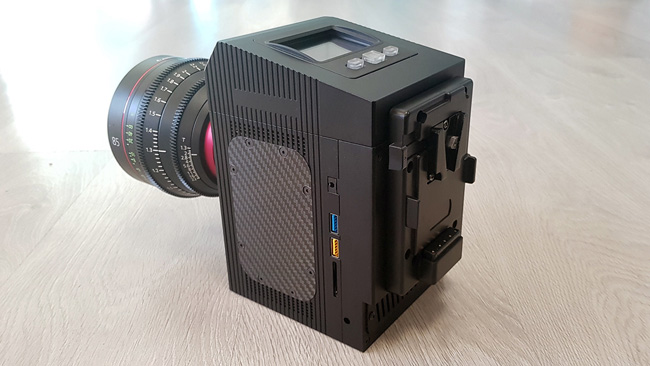
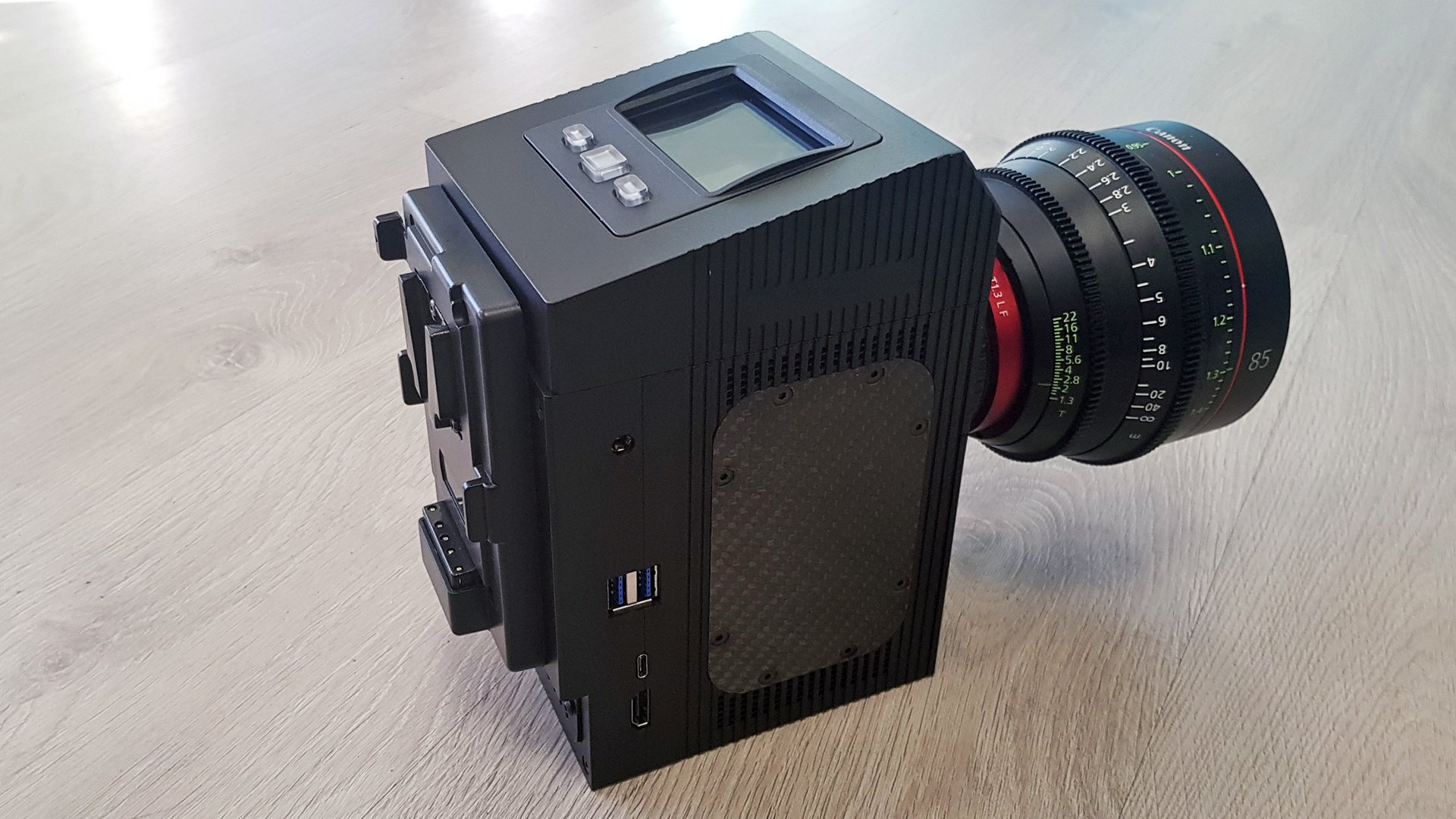
An 8K camera with a sensor even bigger than a Vistavision frame for under twenty thousand euros is an enticing proposition. The specs for Cinemartin's Fran camera, an 8K device with a truly huge sensor, emerged about six months ago, and promised much. Now we've got our hands on one, is it too good to be true?
We should probably mention that events have overtaken this review. Cinemartin, the company behind the Fran camera, no longer exists. You can read our article about it here.
Well, Cinemartin suggested that this be a review, but with the camera in its current state, it's probably fairer to call this an early hands-on preview. Let's be clear upfront: Fran is not (yet) ready for the big time. The company has itself said that, in February 2019, some things are a work in progress. Actually, quite a lot of things appear to be a work in progress, so let's consider this a look at a pre-alpha version of the camera.
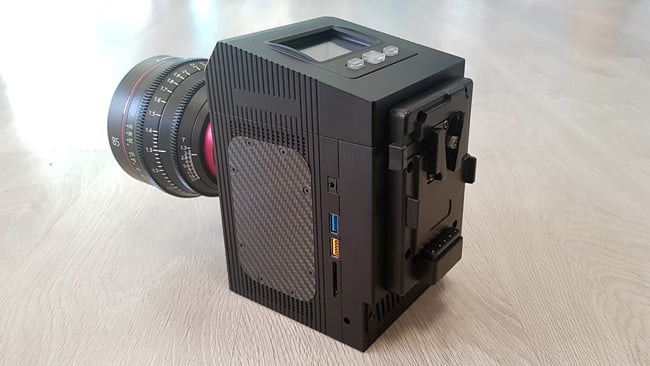
Cinemartin Fran 8K
Fran is a chunky device, a bit less than 195 by 130 by 115mm without battery or lens mount, which is fairly large as cameras go. The version shown here is powered from two coaxial DC jacks, which will need to become a single, high-quality latching connector in the final version. Apply power and Fran starts making quite a lot of noise from two small front-mounted fans – it later becomes clear that these don't shut down when the camera is rolling, which is something that will need to be addressed before the camera is useful on a sync-sound shoot. The other ports around the back end suggest that, like the company's Teo and Next recorders, there's computer hardware in there, and sure enough, on startup, it becomes clear that Fran runs Windows (the LTSB version of Windows 10 that's intended for embedded applications.)
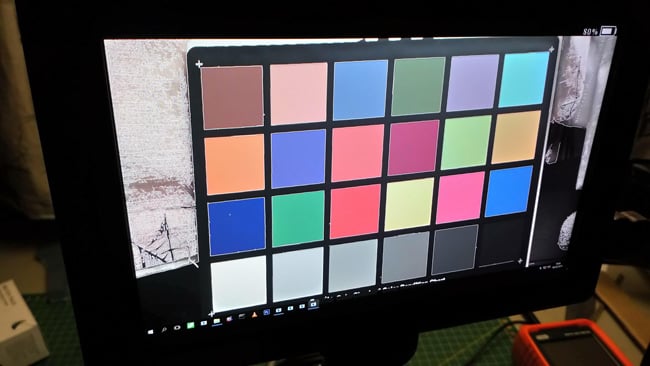
Here we see Fran's focus peaking in action, which works fine. The Windows task bar at the bottom is only visible when in use
This sort of approach sometimes provokes frowns, but there's really nothing wrong with it. It makes software development a lot easier so that we might hope the camera will (eventually) enjoy a rich and complete feature set. Startup time is held down to a reasonable level, going from power button press to viewfinder image in about 43 seconds, and it's nice to be able to do basic things like file management, or even offload, simply by plugging in a mouse. Like the recorders, it's possible to run full-fat applications like Photoshop on the camera.
Control of basics like frame size and white balance is via a standard dot-matrix LCD display on the upper surface, and it's at this point the problems start. The interface between the buttons and the display is sluggish beyond belief – hit a button to advance the cursor to the next option, count slowly to four, and the cursor moves over. It'll buffer keystrokes, so if we want to move along five options, we can hit the button five times then wait, at some length, while the cursor updates to represent our desires. It absolutely isn't necessary for a device running a realtime operating system to seem slow in this way. Your correspondent was once involved in the development of a device running Windows which used a serially-controlled character LCD which was snappy and responsive. It's possible to do this better and, again, the company tells us that things should improve over the next few months.
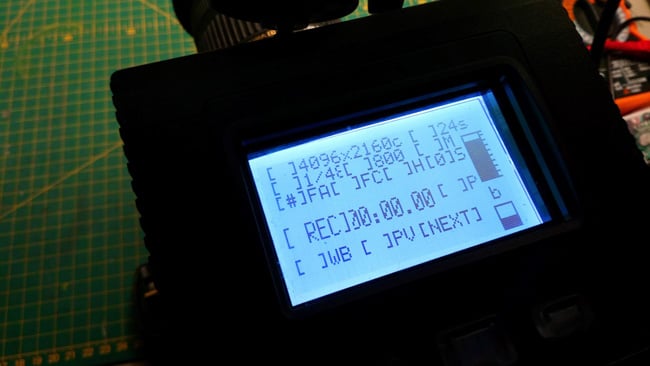
The LCD user interface for fundamentals such as frame size, sensitivity and rate. The # mark next to FA, for Focus Assist, indicates the selected option. It's very slow
There's several frames of delay between things happening in front of the lens and appearing on screen. Whether this is solvable depends how the hardware interface between the sensor and the computer hardware works. There are occasional horizontal discontinuities in the viewfinder image which suggest it is being scaled rather quickly, possibly because the computer back-end doesn't have access to, or is not using, any very upscale GPU resources. Some non-16:9 resolutions produce a distorted viewfinder image and there isn't any obvious way to correct it. Viewfinding in the current version is monochrome for the highest resolutions, though this is intended to change. The HDMI output intended for viewfinding seems to always run at 60Hz with other frame rates interpolated rather unevenly to suit.
The picture specification is where the camera scores. Perhaps most significantly, Fran is a global-shutter camera, which is possibly its best feature; nobody likes rolling shutter. Whether this involves compromises in other areas aren't clear. As far as resolution goes, Fran records to M.2 media, which is fast, and it needs to be: 48 frames per second at 47 megapixels per frame is a lot of data. It won't quite hit 48 frames per second at 8K in the current revision, though this is, again, a target for improvement. There are various cropped and scaled options for reduced resolution or reduced sensor area. The sensor is 37mm by 27mm, so some of these options will be more or less relevant depending on lens coverage.
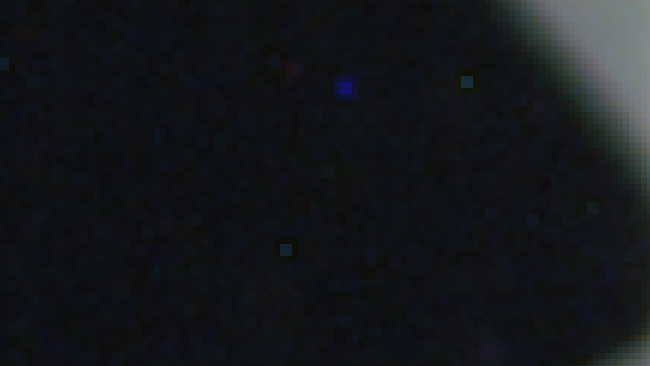
Notice the blue dots in this 600% crop_ they are static and appear on all frames
The pictures have a couple of rather basic problems, such as the visibility of fixed coloured dots a few pixels square in the output image. It seems likely that the software simply isn't doing adequate masking of dead pixels, which all sensors, especially very large ones like this, will have and need to be masked. Perhaps this particular camera simply needs its dead-pixel detection procedure run, but there's no obvious way of doing that. The transition to overexposure is rather abrupt.
At this stage, it would be normal to get out a vectorscope and some charts and see how the colours fall, but this seems premature. A quick eyeball evaluation of the X-Rite Color Checker (a Macbeth chart) suggests that Fran has reasonable colour rendition, though it seems to drag both magenta and red toward salmon pink; red and purple colours become less distinguishable than they could be. When balanced for daylight, Fran also tends to render tungsten light as pinker than the normal warm amber. Cinemartin's background in image-processing software is relevant here, and there's much more to explore in terms of the software post options which might be worth returning to should some of the other issues be addressed.
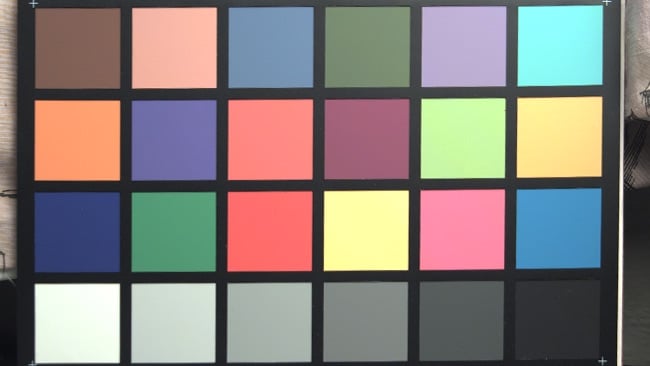
This is an uncorrected frame direct from the camera_assuming reasonable exposure, the colour rendering is reasonable, though dark blues are perhaps a little underexposed
In short, Fran is not finished, which, again, the company accepts. Other camera manufacturers have probably taken orders for cameras which were less finished than this one. Even so, it's rather unusual to have started talking about reviews at this very early stage. It's fine for manufacturers to send out early versions of products with known issues highlighted as a work in progress. That's done all the time, and should continue. Fran, though, is really in a very elementary condition, with some serious issues, such as the very slow user interface.
There is no XLR audio, no timecode, no SDI, no EF lens control, no LUTs, no genlock, no full-rate playback of high resolution material. There's much that's right about the camera-as-a-platform model, especially running a popular OS with good development tools, but, to be charitable, Fran is a lot of work away from realising the benefits of that approach.
For more information about the Fran 8K, visit the official website.
Tags: Production


Comments